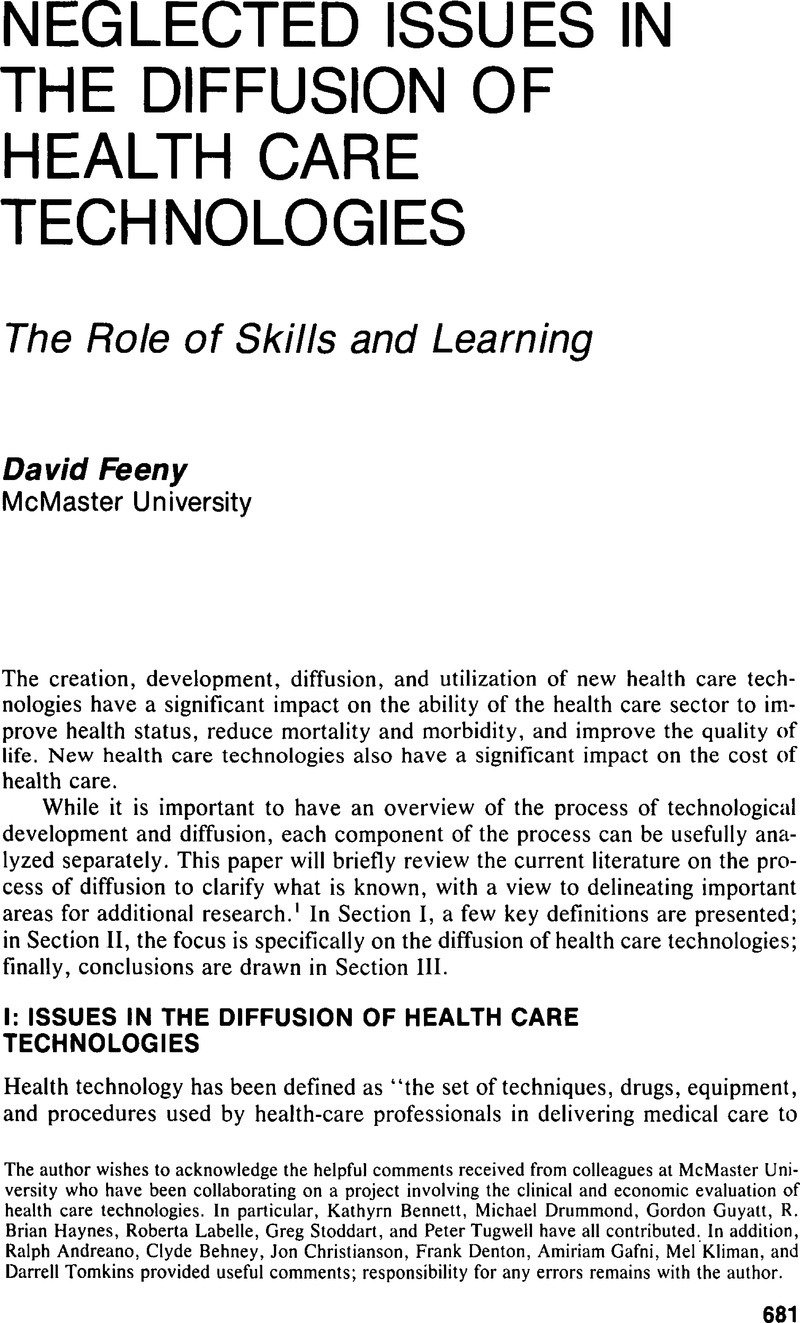Crossref Citations
This article has been cited by the following publications. This list is generated based on data provided by Crossref.
Greer, Ann Lennarson
1988.
The State of the Art Versus the State of the Science: The Diffusion of New Medical Technologies into Practice.
International Journal of Technology Assessment in Health Care,
Vol. 4,
Issue. 1,
p.
5.
Deber, Raisa B.
Thompson, Gail G.
and
Leatt, Peggy
1988.
Technology Acquisition in Canada: control in Regulated Market.
International Journal of Technology Assessment in Health Care,
Vol. 4,
Issue. 2,
p.
185.
Larson, Eric B.
and
Kent, Daniel L.
1989.
The Relevance of Socioeconomic and Health Policy Issues to Clinical Research: The Case of MRI and Neuroradiology.
International Journal of Technology Assessment in Health Care,
Vol. 5,
Issue. 2,
p.
195.
Kase, Daniel J.
and
Saltzman, Brian
1991.
Extracorporeal shock-wave lithotripsy: Capital investment decision.
Urology,
Vol. 38,
Issue. 1,
p.
47.
McConnell, Edwina A.
and
Hilbig, Jill
2000.
A National Study of Perioperative Nurse Education in Two Technologies.
AORN Journal,
Vol. 72,
Issue. 2,
p.
254.
Bozic, Kevin J.
Pierce, Read G.
and
Herndon, James H.
2004.
Health Care Technology Assessment.
The Journal of Bone and Joint Surgery-American Volume,
Vol. 86,
Issue. 6,
p.
1305.





